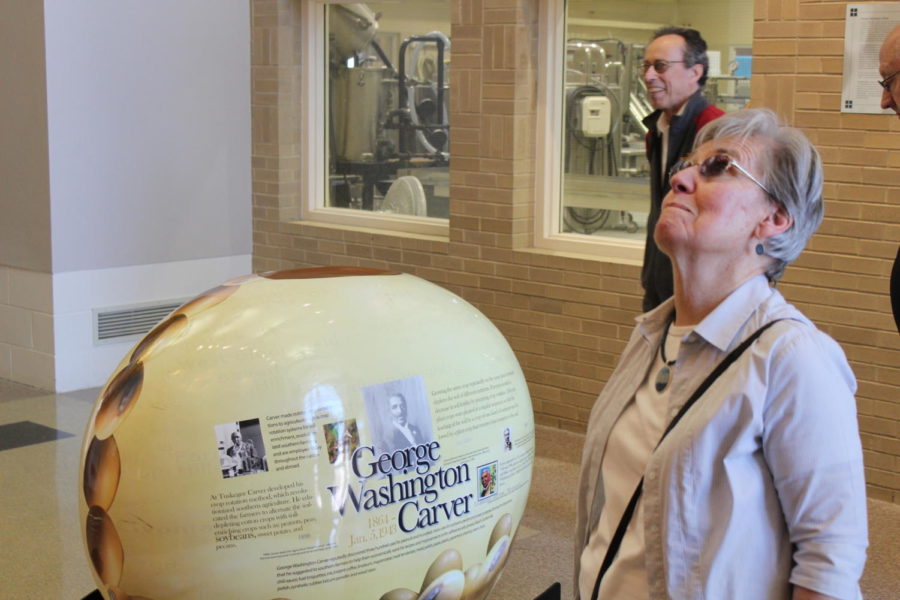Art Walk emphasizes G.W. Carver’s legacy and impact at Iowa State
February 22, 2017
Museum patrons toured on-campus art inspired by George Washington Carver’s research and life on Wednesday as part of University Museum’s Art Walk. The art walks allow for students and community members to engage with Iowa State’s public art collection.
In the Food Sciences building, Youssef Asar’s three-part mural of Carver’s life and legacy blended Asar’s own Egyptian heritage along with Carver’s life. Asar was the George Washington Carver artist in resident at Iowa State in 1999.
The three-part mural cites different parts of Carver’s heritage. In Determination, Asar depicts the slaves of the past providing a foundation for Carver to break the bonds of his own slavery, while in Homage, Asar depicts Carver receiving agricultural knowledge from the Egyptian god Hoth.
“Carver believed that the work with his products was almost divinely inspired,” said David Faux, Interpretation Specialist with University Museums and guide for the art walk.
In front of the Seed Science building, a life-sized sculpture of Carver by Christian Petersen depicts him holding a peanut plant, which was one of Carver’s primary experimental commodities. Christian Petersen created a model for the sculpture in the 1940s, but no one wanted to commission the work into a full-sized sculpture.
In the 1960s, a renewed interest in Carver’s work persuaded Petersen’s wife to sell the sculpture to the university, where the model stood outside Carver Hall for nearly 30 years. In accordance with Petersen’s wishes, the sculpture was eventually made life-sized as part of the Seed Science building’s Art in State Building’s component.
Carver himself was an artist, and was known for two particular studies he did of plants. Faux told visitors about an instance where Carver’s friend Edgar Stanton, a professor at the university, sent his drawings to the 1893 World’s Fair in Chicago. The pieces received honorable mention, but Carver did not want to be honored because he felt he didn’t have appropriate clothing. Stanton bought a suit for Carver, and Carver went on to receive the award.
The final stop of the walk was in the Dean’s wing of Curtiss Hall, where both Carver and Henry A. Wallace are portrayed in an innovative portrait that seeks to evoke the idea of mentorship.
The portrait, painted by Rose Frantzen, was inspired by Wallace’s memories of coming to Iowa State as a child, and collecting samples with Carver while Carver was a student at Iowa State. Wallace cited Carver as an major influence for his love of agriculture, and Wallace later became the United States Secretary of Agriculture.
The next Art Walk will be held on March 22, and will examine art on campus created by or featuring women.















